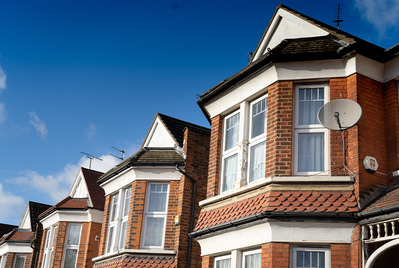
The ideal outcome from investing in property is you get a good ongoing return from monthly rental profit while the property appreciates nicely in value. That’s what all landlords hope for! But in reality, properties are usually stronger in one return than the other, so the first thing you need to decide is: what kind of return do you want or need?
Once you know what kind of financial returns you’re looking for – how much you want or need and when – here are some of the most important things to consider:
Understand leverage and how borrowing can increase your returns
Most people aim to own their home outright, to give them the security of knowing it’s all theirs. But when you’re looking at buy to let, you should understand that it’s possible to increase your returns by having a mortgage. That’s down to the fact that when the property increases in value, you get to keep all the profit (less tax) and benefit from the growth on the bank’s money as well as your own. As a simple example:
You buy a property worth £200,000. If the market increases by 10%, you make £20,000 subject to tax
Owning outright that's a 10% return on the cash you invested (£20,000 / £200,000 X 100)
Buying with a 75% mortgage and 25% deposit of £50,000, it's a 40% return
Even after deducting mortgage interest and any other additional costs, it's still a better return
Understand your local market
The property market is made up of hundreds, if not thousands of micro-markets. So, before you make any investment, it's essential you speak to local lettings professionals who can advise on prices, rents and local trends. They should also be be able to give you an idea of how much ongoing income and capital growth you can expect. As both sales and lettings experts, we’re well-placed to help you decide what to buy and how to let for the best returns.
New versus older properties
- Maintenance costs. New-build properties have warranties and guarantees that should mean very low maintenance costs for at least the first 10 years. Unless an older property has recently been completely refurbished, it is likely to need more maintenance. However you pay a premium
- Growth in capital value. Older properties can be in better locations or if unique, demand for them could be greater, which can lead to better capital growth. And if you’re looking to let Houses in Multiple Occupation, older properties also tend to have bigger rooms
Think about how long you plan to own the property and make sure the type and age is suitable for your personal situation.
Understand the numbers
The rental yield figures you see quoted are often a gross figure: simply the rental income as a percentage of the property value. As an individual private landlord, two more useful calculations are:
- Net annual profit. That’s the annual rent you get, less all your costs (including mortgage interest, agent management fees, maintenance costs and any tax that will be due)
- Net return on investment. That’s the annual net figure as a percentage of the amount of money you’ve invested in the property
E.g. £50,000 deposit plus £10,000 refurbishment costs = £60,000 invested
£3,000 rental profit per annum
5% net return (£3,000 / £60,000 x 100)
You can also add any capital growth into your annual profit to get an overall annual return figure. This calculation will help you compare property against other forms of investment.
And don't forget to factor inflation into your longer-term plans. If you don't or ca't raise your rents in line with inflation, that will impact negatively on your profits over time.
Buy to let is a long-term investment and not the kind of business to get into if you’re looking for quick returns. If you don’t know what you’re doing, you can easily end up with a millstone round your neck, rather than an asset. But as long as you’re careful about what you buy, make sure the property is let and managed properly and understand and monitor the financial side, you should see a good return.
Our lettings experts are always happy to talk to you about your investment plans. Just call into your local Your Move branch.
The Your Move Content Marketing Team



